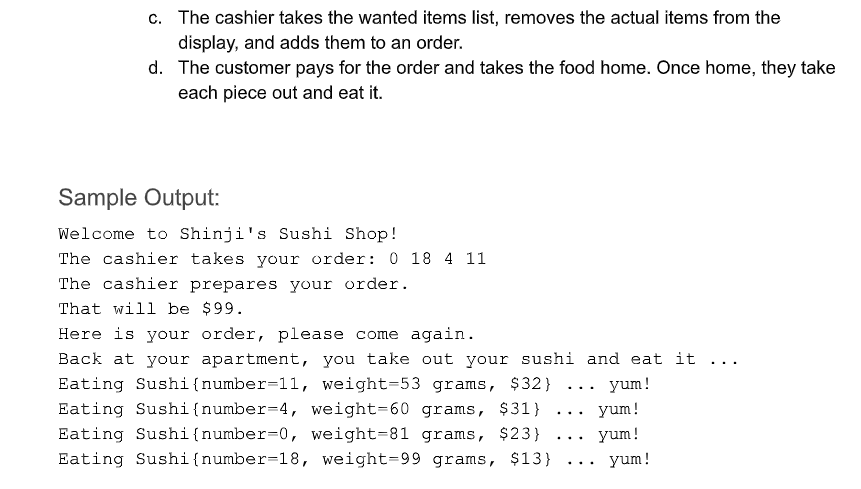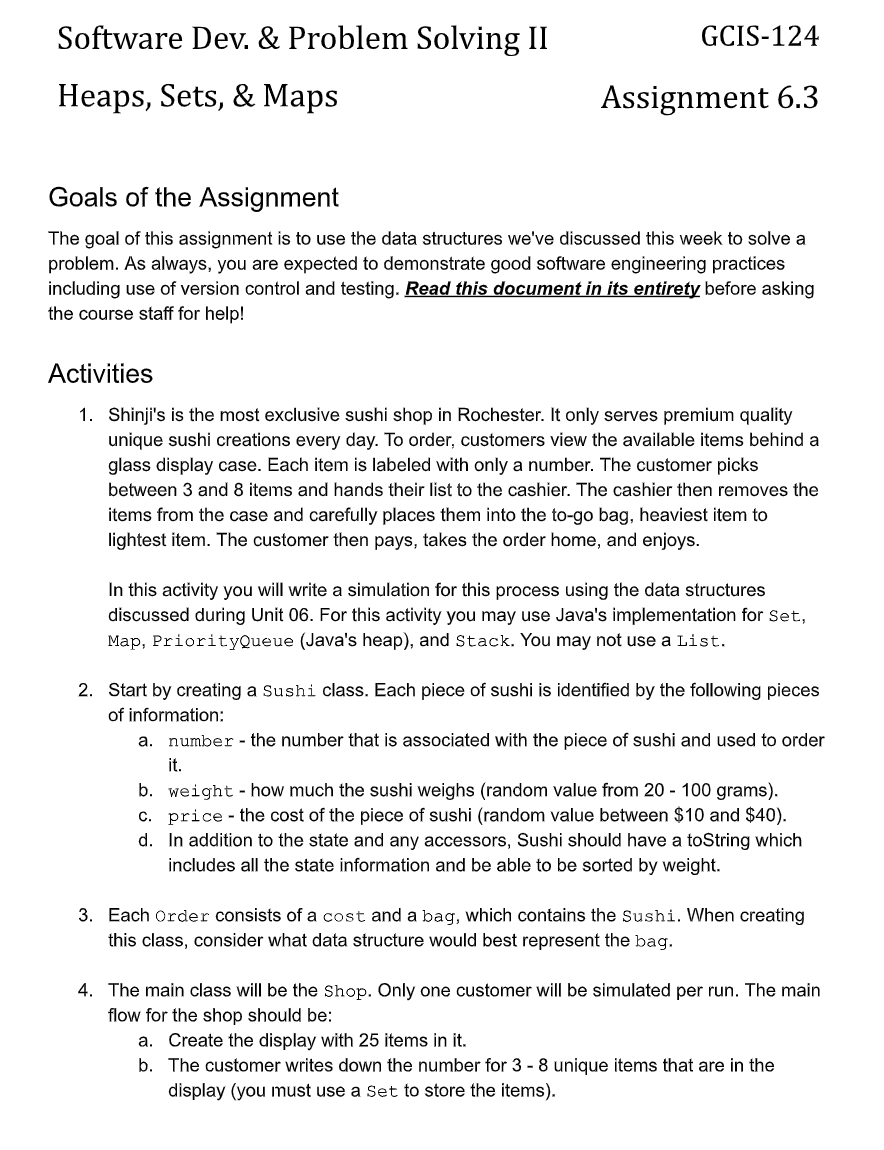Answered step by step
Verified Expert Solution
Question
1 Approved Answer
c. The cashier takes the wanted items list, removes the actual items from the display, and adds them to an order. d. The customer


c. The cashier takes the wanted items list, removes the actual items from the display, and adds them to an order. d. The customer pays for the order and takes the food home. Once home, they take each piece out and eat it. Sample Output: Welcome to Shinji's Sushi Shop! The cashier takes your order: 0 18 4 11 The cashier prepares your order. That will be $99. Here is your order, please come again. Back at your apartment, you take out your sushi and eat it Eating Sushi (number=11, weight=53 grams, $32} .. yum! Eating Sushi {number=4, weight=60 grams, $31} yum! Eating Sushi {number=0, weight=81 grams, $23} yum! Eating Sushi (number=18, weight=99 grams, $13} . yum! Software Dev.& Problem Solving II Heaps, Sets, & Maps GCIS-124 Assignment 6.3 Goals of the Assignment The goal of this assignment is to use the data structures we've discussed this week to solve a problem. As always, you are expected to demonstrate good software engineering practices including use of version control and testing. Read this document in its entirety before asking the course staff for help! Activities 1. Shinji's is the most exclusive sushi shop in Rochester. It only serves premium quality unique sushi creations every day. To order, customers view the available items behind a glass display case. Each item is labeled with only a number. The customer picks between 3 and 8 items and hands their list to the cashier. The cashier then removes the items from the case and carefully places them into the to-go bag, heaviest item to lightest item. The customer then pays, takes the order home, and enjoys. In this activity you will write a simulation for this process using the data structures discussed during Unit 06. For this activity you may use Java's implementation for Set, Map, PriorityQueue (Java's heap), and Stack. You may not use a List. 2. Start by creating a Sushi class. Each piece of sushi is identified by the following pieces of information: a. number the number that is associated with the piece of sushi and used to order it. b. weight how much the sushi weighs (random value from 20- 100 grams). c. price - the cost of the piece of sushi (random value between $10 and $40). d. In addition to the state and any accessors, Sushi should have a toString which includes all the state information and be able to be sorted by weight. 3. Each Order consists of a cost and a bag, which contains the Sushi. When creating this class, consider what data structure would best represent the bag. 4. The main class will be the Shop. Only one customer will be simulated per run. The main flow for the shop should be: a. Create the display with 25 items in it. b. The customer writes down the number for 3 - 8 unique items that are in the display (you must use a Set to store the items).
Step by Step Solution
★★★★★
3.46 Rating (156 Votes )
There are 3 Steps involved in it
Step: 1
Below are the steps you can follow to complete this assignment 1 Create the Sushi class Define a cla...
Get Instant Access to Expert-Tailored Solutions
See step-by-step solutions with expert insights and AI powered tools for academic success
Step: 2

Step: 3

Ace Your Homework with AI
Get the answers you need in no time with our AI-driven, step-by-step assistance
Get Started


